The Master of Mary of Burgundy
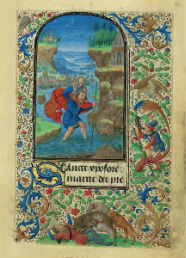
Figure 1: Prayer Book of Charles
By Karla Flattery
The anonymous painter known as the Master of Mary of Burgundy was one of the most talented and inventive of South Netherlandish illuminators.1 The Northern Renaissance got a strong impression of this unique talent with the Master’s illuminated manuscript, “The Prayer Book of Charles the Bold,” in 1469(Fig. 1). The Master worked for his prominent patrons at the court of Burgundy for Charles, the Duke of Burgundy, and his wife, Margaret of York. The Master's name derives from his most notable work, a book of hours made around 1480 for Mary of Burgundy, the daughter of Charles and Margaret. “The Book of Hours of Mary of Burgundy” is the only other work the Master is associated with. The Master is known for depicting the movement of muscles and the expressiveness on the faces of his subject, however his greatest contribution to the illuminated manuscript was the handling of the borders on the manuscript page. This new technique, using trompe l’oeil was perfected in the ‘Ghent-Bruges school’ of painters.
The anonymous painter known as the Master of Mary of Burgundy was one of the most talented and inventive of South Netherlandish illuminators.1 The Northern Renaissance got a strong impression of this unique talent with the Master’s illuminated manuscript, “The Prayer Book of Charles the Bold,” in 1469(Fig. 1). The Master worked for his prominent patrons at the court of Burgundy for Charles, the Duke of Burgundy, and his wife, Margaret of York. The Master's name derives from his most notable work, a book of hours made around 1480 for Mary of Burgundy, the daughter of Charles and Margaret. “The Book of Hours of Mary of Burgundy” is the only other work the Master is associated with. The Master is known for depicting the movement of muscles and the expressiveness on the faces of his subject, however his greatest contribution to the illuminated manuscript was the handling of the borders on the manuscript page. This new technique, using trompe l’oeil was perfected in the ‘Ghent-Bruges school’ of painters.
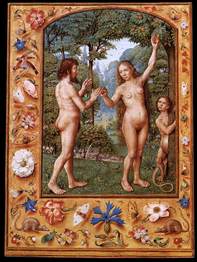
Figure 4: Grimani Breviary
The Master of Mary of Burgundy was influenced by Master painters from Ghent, especially Hugo van der Goes. The Master was a painter and draftsman and was associated with the painting schools of Bruges and Ghent in the mid to late 1400’s. In 1475, Ghent was a renowned artistic center and offered an opportunity to collaborate with some of the most talented artists in the southern Netherlands. The Master worked with illuminators Lieven van Lathem, Simon Marmion, and Nicolas Spiernic. During the late 1400’s, Alexander Bening also worked in the same area as these fellow Masters.
Alexander(or Sanders) Bening lived in Ghent and Bruges in the early 1400’s until his death in 1519. Alexander became a member of the Ghent painter’s guild in 1469, and Hugo van der Goes and Justus van Ghent acted as sponsors. At that time Lieven van Latham, Simon Marmion, and Nicolas Spiernic(the Master’s associates) were all members of the painter’s guild in Ghent. Like the Master, Bening was also influenced by Hugo van der Goes. Catherina van der Goes, a relative of Hugo’s(possibly his sister or niece), married Alexander and together they had 2 sons, Simon and Paul. Both were artists, however only Simon went on to be an acclaimed illuminator and painter. Alexander, along with his son, was a member of the Ghent Associates, most known for their work on the Grimani Breviary.
Alexander Bening was in charge of the work on the Grimani Breviary. The breviary, a small prayerbook, was completed by a group of artists known as the Ghent Associates and were linked with the new ‘Ghent-Bruges school’ tradition. The Ghent-Bruges school was a group of manuscript illuminators and scribes active during the last quarter of the 15th and first part of the 16th centuries, principally in the Flemish cities of Ghent and Bruges.2 This tradition was founded by the masters, Nicolas Spiernic, Lievan van Latham, Alexander Bening, Simon Bening, Gerard Horenbout, and the Master of Mary of Burgundy, believed to be a collection of all 5 artists.
Alexander(or Sanders) Bening lived in Ghent and Bruges in the early 1400’s until his death in 1519. Alexander became a member of the Ghent painter’s guild in 1469, and Hugo van der Goes and Justus van Ghent acted as sponsors. At that time Lieven van Latham, Simon Marmion, and Nicolas Spiernic(the Master’s associates) were all members of the painter’s guild in Ghent. Like the Master, Bening was also influenced by Hugo van der Goes. Catherina van der Goes, a relative of Hugo’s(possibly his sister or niece), married Alexander and together they had 2 sons, Simon and Paul. Both were artists, however only Simon went on to be an acclaimed illuminator and painter. Alexander, along with his son, was a member of the Ghent Associates, most known for their work on the Grimani Breviary.
Alexander Bening was in charge of the work on the Grimani Breviary. The breviary, a small prayerbook, was completed by a group of artists known as the Ghent Associates and were linked with the new ‘Ghent-Bruges school’ tradition. The Ghent-Bruges school was a group of manuscript illuminators and scribes active during the last quarter of the 15th and first part of the 16th centuries, principally in the Flemish cities of Ghent and Bruges.2 This tradition was founded by the masters, Nicolas Spiernic, Lievan van Latham, Alexander Bening, Simon Bening, Gerard Horenbout, and the Master of Mary of Burgundy, believed to be a collection of all 5 artists.
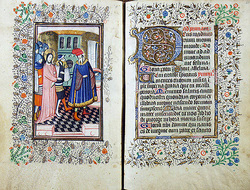
Figure 2: Book of Hours (use of Sarum) 1430-1450
The Master’s main contribution to the illuminated manuscript was the handling of the borders. The previous style of the border was a planimetric pattern, or a 2D rendering of objects on a flat plane(see Fig. 2). The Master instead ‘introduces the entire visual world into his border decorations which he treats unashamedly in a three-dimensional, illusionistic, way’(see Fig. 3).3 By using trompe l’ oeil, the Master switches the role of the border. The border now becomes ‘real’ and the center image is just a picture. Trompe l’oeil is a technique involving manipulating the image into an optical illusion, where by the viewer sees the image as real, or 3D. This trompe l’ oeil technique is apparent in Fig. 3. The Master manipulates the flowers and the vines in a way that makes them appear real. In Fig. 4, the berries, insects, and flowers painted by Alexander Bening demonstrate the same technique as the Master. This revolutionary technique of trompe l’oeil became affiliated with the Ghent-Bruges school.
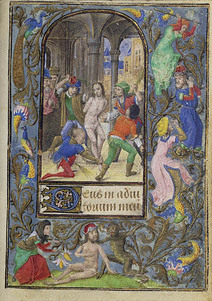
Figure 3: Book of Hours of Mary of Burgundy
Whether the Master of Mary of Burgundy was Alexander Bening or a fellow illuminator does not take away from the work that was accomplished by the Ghent-Bruges school. One of the best examples of the Ghent-Bruges school was a prayer book painted for Queen Isabella. Queen Isabella the Catholic, was the sponsor of Christopher Columbus’s explorations and the reigning monarch during the height of the Spanish Inquisition. She received a book of hours from a subject at the end of the 1490s now known as, the Hours of Queen Isabella the Catholic(See Fig. 5). The margins and borders are embellished with gold leaf and the illustrations take the form of miniature paintings. This manuscript was illuminated by a circle of at least five highly organized manuscript painters active in the Flemish cities of Ghent and Bruges. The principal illuminators who painted the majority of the book’s miniatures is known as the Master of the Prayer Book of Maximilian I, and Associates. The Master of the Prayer Book of Maximilian I was named for his work in the earliest of the devotional manuscripts made for Maximilian, Emperor of the Holy Roman Empire (1459-1519).4 Maximilian was the husband of Mary of Burgundy. A large number of illuminated manuscripts were associated with this master and his workshop. The extended career of the Maximilian Master and the numerous complicated commissions he seems to have directed have prompted some scholars to identify him with the Flemish illuminator Alexander Bening, whose name is only known from guild records and other documents.5
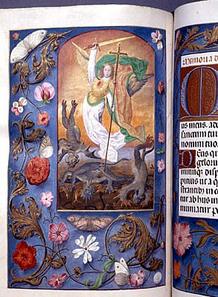
Figure 5: Hours of Queen Isabella the Catholic
The identity of the Master of Mary of Burgundy has prompted a lot of discussion and dissension among scholars. Although his identity remains unknown, a number of art historians assume him to be Alexander (or Sanders) Bening, father of Simon Bening, the last grand Flemish Master. It is clear the 2 artists share common characteristics in their work. There are few documented works by Alexander, but it has been suggested that he should be identified with the Master of Mary of Burgundy, or the Master of Maximilian I, which would give him an artistic status appropriate to the contemporary reputation he enjoyed.6 Musee du Louvre, Museum of the Louvre in Paris, lists Alexander Bening as ‘Sander Bening – Master of Mary of Burgundy – Master of the Prayer Book of Maximilian I.’ Though we may never know the true identity of the Master of Mary of Burgundy, Alexander Bening, or the Master of the Prayer Book of Maximilian I, we do know the revolutionary work of the Masters of the Ghent-Bruges school rejuvenated the illuminated manuscript and eventually inspired a new genre of painting, the devotional portrait.
Endnotes:
1 “The J. Paul Getty Museum,” accessed March 15, 2011. http://www.chicagomanualofstyle.org/tools_citationguide.html
2 “Artist’s Biographies A-E,” VA Museum, accessed April 5, 2011, http://www.vam.ac.uk/collections/paintings/miniatures/atoe/index.html.
3 Otto Pacht, “Master of Mary of Burgundy,” The Burlington Magazine for Connoisseurs, 501 (1994): 295. P. 300.
4 Anne H. Van Buren, “The Master of Mary of Burgundy and His Colleagues: The State of Research and Questions of Method,” Deutscher Kunstverlag GmbH, Munich: Berlin, 38 Bd., H. ¾ (1975), p. 289.
5 Van Buren, p. 289.
6 Otto Pacht, “The Master of Mary of Burgundy,” The Burlington Magazine for Connoisseurs 501 (1994): 295.
